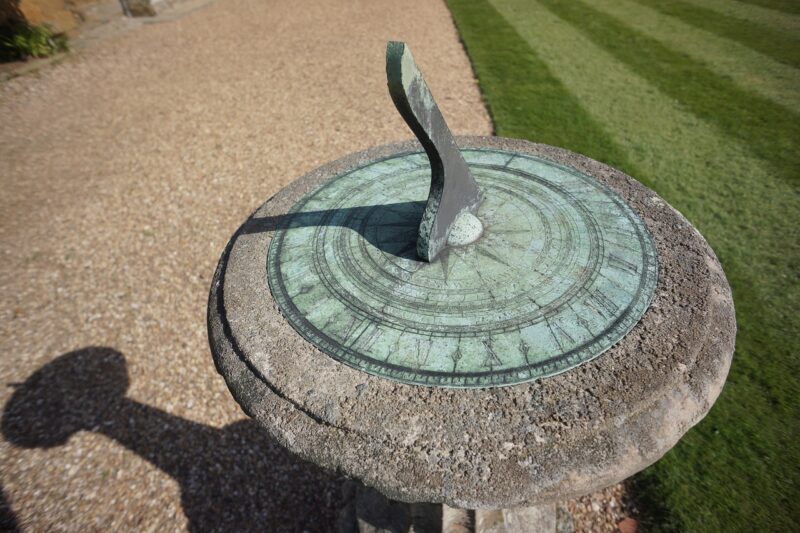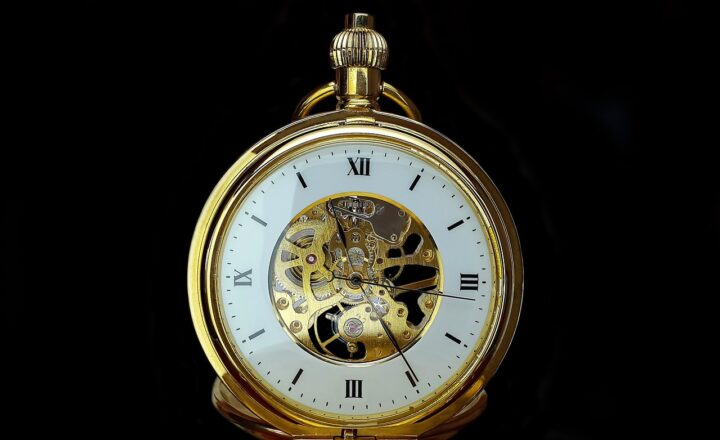The Evolution of Timekeeping Devices From Ancient Sundials to Modern Atomic Clocks
November 17, 2024

Timekeeping has evolved remarkably over the centuries, reflecting mankind’s relentless pursuit to measure and understand time. From the ancient sundials that harnessed the sun’s position to the precise atomic clocks that govern today’s technology, the history of timekeeping is a fascinating journey through inventiveness, science, and the quest for accuracy.
1. Ancient Timekeeping: The Sundial and Water Clocks
Timekeeping can be traced back to ancient civilizations who relied on natural phenomena to tell the time. One of the earliest tools was the sundial, used by the Egyptians and Babylonians as early as 1500 BC. It measured time based on the position of the sun’s shadow cast by a gnomon (a vertical stick) onto a flat surface marked with hours.
– The Sundial: As sunlight shifted throughout the day, the shadow’s position allowed users to tell the time easily during daylight. However, sundials were only useful when the sun was shining, leading to the need for alternative timekeeping methods.
– Water Clocks (Clepsydra): To address the limitations of sundials, ancient Greeks and Chinese developed water clocks, which measured time based on the flow of water. The precise calibration of the rate of flow enabled time measurement day or night, a significant advancement for societies engaging in various activities like trade and governance.
Although rudimentary, these ancient timekeeping devices laid the groundwork for developing future technologies.
2. Mechanical Clocks: The Renaissance Revolution
The invention of mechanical clocks in the 13th century marked a pivotal shift in timekeeping. These devices utilized gears, weights, and escapements to regulate time more accurately than their predecessors.
– The First Mechanical Clocks: Initially, mechanical clocks were large and installed in church towers to signal prayer times. However, their adoption spread rapidly throughout Europe, enhancing navigation, trade, and daily life.
– The Pendulum Clock: Invented by Christiaan Huygens in 1656, the pendulum clock improved accuracy profoundly. Using a swinging pendulum as a timekeeping element, these clocks could achieve an accuracy of seconds per day, reshaping society’s perception and regulation of time.
Mechanical clocks not only changed how societies functioned but also spurred innovations in various sciences, particularly navigation and astronomy.
3. The Rise of Standard Time and Time Zones
As industry expanded in the 19th century, the need for standardized time became apparent, especially with the advent of railroads and telegraphs. Inconsistencies in time measurements led to confusion and inefficiencies, prompting the establishment of time zones.
– Railroad Timekeeping: By the 1870s, railway companies began adopting standardized time to prevent accidents and improve scheduling. The introduction of time zones, notably by Sir Sandford Fleming at the International Meridian Conference in 1884, established a coordinated system that we still use today.
– The Role of the Greenwich Mean Time (GMT): GMT became the global standard time, with the Prime Meridian at Greenwich, England, serving as the reference point. This standardization was crucial for international communications and trade, laying the foundation for synchronization across time zones worldwide.
The industrial age transformed not only how we kept time but also how we lived and worked alongside it.
4. Quartz Clocks: A New Era of Precision
The introduction of quartz technology in the 20th century revolutionized timekeeping. Quartz clocks, developed in the 1920s, utilize the consistent vibrations of quartz crystals to keep time accurately.
– The Quartz Clock Mechanism: When an electric current passes through a quartz crystal, it vibrates at a precise frequency. These vibrations are translated into consistent time measurements, allowing quartz clocks to gain accuracy within seconds over years.
– Impact on Society: The widespread adoption of quartz technology led to affordable and highly accurate timekeeping devices, available to the masses. This significant advancement shaped various aspects of life, including punctuality in work and social engagements.
Quartz clocks eventually found applications in diverse technologies, from watches to computers, integrating timekeeping into the fabric of modern life.
5. Atomic Clocks: The Pinnacle of Precision
The development of atomic clocks in the mid-20th century represented the height of timekeeping technology. These devices utilize the natural vibrations of atoms, specifically cesium or rubidium atoms, to maintain extremely accurate measurements.
– How Atomic Clocks Work: By measuring the frequency of microwave radiation emitted by atoms when they transition between energy states, atomic clocks can achieve an accuracy of one second over millions of years. This unparalleled precision is crucial for GPS satellites, telecommunications, and scientific research.
– Global Time Standards: The International System of Units (SI) defines the second based on the vibrations of cesium atoms, setting a universal standard that facilitates global synchronization.
Atomic clocks have also paved the way for ongoing advancements in quantum technology and theoretical physics, continuing to shape humanity’s understanding of time and the universe.
6. The Future of Timekeeping
Looking towards the future, timekeeping continues to evolve with advancements in technology. As we enter the quantum computing era, researchers are exploring the potential of even more precise atomic clocks that could redefine our understanding of time itself.
– Quantum Clocks: Emerging technologies are exploring quantum entanglement and superposition to create clocks that could exceed the accuracy of current atomic clocks.
– Role in Technology: Future timekeeping devices are expected to play pivotal roles in navigating the complexities of technology, including satellite systems, telecommunications, and advanced scientific research techniques.
The evolution of timekeeping devices reflects humanity’s incredible ingenuity and adaptability. As we move toward an increasingly technological future, our understanding and measurement of time will likely continue to transform, ushering in new horizons and possibilities.
Conclusion
Timekeeping has come a long way from the sundials of ancient civilizations to the cutting-edge atomic clocks of today. Each invention marked a significant milestone, revealing humanity’s quest to understand and master time. As technology continues to advance, the future holds exciting prospects that may redefine how we perceive and measure time.
Time is a resource that shapes every facet of our lives, and understanding its evolution enriches our appreciation of both history and the future.






